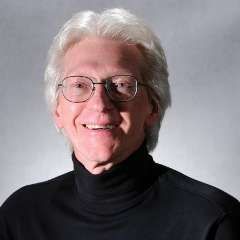Midway through the 2018/19 season, the Czech Philharmonic is an orchestra balanced between two worlds. The New World was unveiled in impressive fashion at the opening concerts in October, with new Chief Conductor and Music Director Semyon Bychkov injecting fire and thunder into the orchestraʼs lush, heartfelt sound. The emotional underpinning is still there, but the style is bold and fast – music, and an orchestra, with places to go.
In Bychkovʼs absence, the Old World is still in place, as evinced by a pre-Christmas program of mostly Czech music with Jakub Hrůša on the podium. The sound was once again relaxed and warm, the emotions fulsome in both the playing and singing, and the sheer joy and pride of performing Dvořák and Martinů unmistakable. And nothing can supplant hometown talent like singers Kateřina Kněžíková and Svatopluk Sem and the Prague Philharmonic Choir, although German soloist Frank Peter Zimmermann made nationality and borders irrelevant with a star turn on Martinůʼs daunting Violin Concerto no. 1.
The program was top-heavy with choral works, starting with Dvořákʼs Te Deum, which was rendered in a grand, almost overwhelming style more typical of a finale. Hrůša was a bit heavy on the percussion, especially for sacred music – though to be fair, only the text is religious. The essential character of the cantata is secular and above all joyful, and the orchestra definitely had to take the volume up a notch to keep up with the choir, which was electric from the opening notes, showering the stage with vocal fireworks. The two soloists struck a soothing contrast – Kněžíková in rich, round tones, and Sem in a clear, authoritative baritone. In all, it was a remarkable mix of power dynamics and contemplative moments.
That set the stage for The Resurrection of Hope and Light, a new cantata by Czech composer Jiří Gemrot. The text, written by his daughter Kateřzina Penková, pines for a savior in a world of anxiety, then rejoices in the birth of Christ. The music is oddly pensive for such a hopeful subject, only gradually warming to the promise of redemption, mostly in radiant tones from the female choir members. Both Gemrot and Hrůša made liberal use of multiple timpanis, but the piece was most intriguing in fine touches like an ongoing interplay between the flutes and clarinets, occasional off-key harmonics and an unusual 5/4 time signature. Gemrot is a skilled technician who knows how to take full advantage of an orchestra, and in this case he pushed the boundaries just enough to give a modern flavor to a classic form.
Hrůša is an unabashed fan of Martinů – in his off-hours, he is president of the International Martinů Circle – and has a fine feel for his music. So it wasnʼt surprising that the composerʼs scorching First Violin Concerto was in many ways the most joyous piece of the evening, especially with the scintillating contribution of Zimmermann, who blazed through the slashing solo lines and complicated runs with gusto, obviously enjoying the challenge. Hrůša set the tone and pace with plenty of zest in the orchestra, while maintaining sterling clarity and balance. And Zimmermann had even the musicians applauding after returning for a soulful encore of the third movement from Bartókʼs Sonata for Solo Violin.
With a childrenʼs choir joining the adults, the evening closed with a solid, at times almost solemn, treatment of Honeggerʼs Christmas Cantata. Like Gemrotʼs, this one also starts in a dark vein, gradually coming into the light with the help of the childrenʼs voices and, in this performance, subtle colors and shading from the Prague Philharmonic Choir. Hrůša started slow, then followed the mood of the music into an agreeably upbeat tempo with some pop in the sound that made for a bright finish.
While the faithful in Prague basked in the glow of the Old World, audiences abroad were excited by what they saw and heard of the New World. The Czech Philharmonic had just returned from four weeks on tour, mostly (and appropriately) in the US, where a New York Times reviewer noted “tears and awe-struck faces in the audience” at Carnegie Hall after Bychkov led the orchestra in Mahlerʼs inspirational Resurrection Symphony (no. 2). An all-Dvořák program in San Francisco two weeks later was described as “magnificently fine” by a San Francisco Chronicle writer who took a deep breath after the concert and declared, “This sounded like a match made in heaven.”
And thatʼs just for openers.


